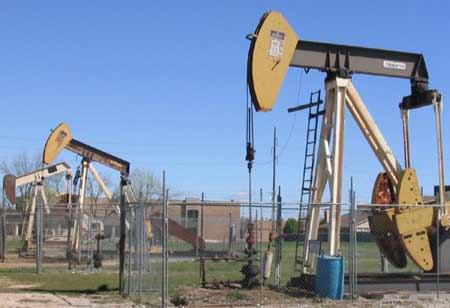Thank you for Subscribing to Energy Business Review Weekly Brief
Different Artificial Lift Methods In The Oil Industry
Artificial lift is one of the most crucial methods utilized to draw oil from wells, and its developed technologies help raise production.

By
Energy Business Review | Sunday, May 14, 2023
Stay ahead of the industry with exclusive feature stories on the top companies, expert insights and the latest news delivered straight to your inbox. Subscribe today.
There are many artificial lift methods in the oil industry.
FREMONT, CA: Artificial lift is one of the most crucial methods utilized to draw oil from wells, and its developed technologies help raise production.
Operating principle
The operating principle of an artificial lift system is to manage the necessary bottom hole pressure by artificial means to produce desired fluids. This is achieved by various artificial lift procedures in the oil & gas industry, such as sucker rod pumps, electrical submersible centrifugal pumps, rotating rod pumps, hydraulic pumps, piston-type sucker rod pumps, plunger lifts, gas lifts, etc. Each has its unique advantages and disadvantages.
There are many artificial lift methods in the oil industry. The method used is chosen based on four main considerations. These considerations are technical characteristics that incorporate surface and infrastructure, reservoir, geological, drilling, geophysical, and economic attention.
Artificial Lift Methods
The Electrical Submersible Pump (ESP) is more appropriate for wells with low BHP(bottom hole pressure), low bubble point, low gas/oil ratios, high water cut, or low API gravity fluids.
The Hydraulic Lift is another way to improve production through a surface pump that puts pressure on the well fluid. It comprises the surface high-pressure injection pump and pipeline, downhole assembly, injection tubing, and positive displace or jet pump. The hydraulic lift well has its wellhead attached to the power fluid manifold.
The Rod Lift is another famous artificial lift method. It can drill deeply to generate from wells with low bottom hole flowing pressures and is appropriate for very low pump intake pressures. So this procedure is suitable during the final stage of production. This method gives high system efficiency, positive displacement, improved controls, and flexibility.
The Plunger lift is employed in low-volume wells with production rates of around 200 barrels per day (b/d). This method works by forming differential pressure to push up the fluids. This method is cost-effective.
The Gas Lift method injects gas into the reservoir to push the product to the surface. It suits low productivity, high-gas/oil ratio wells, or deflected wellbores.
The Jet Pump is a low-priced method as to other methods. As the volume, depth, size, and deviation of generating wells continue to increase, the jet pump installations rise too. It is a thriving method for depths varying from 500 feet to 19,000 feet and production rates ranging from below 100 b/d to 20,000 b/d.






